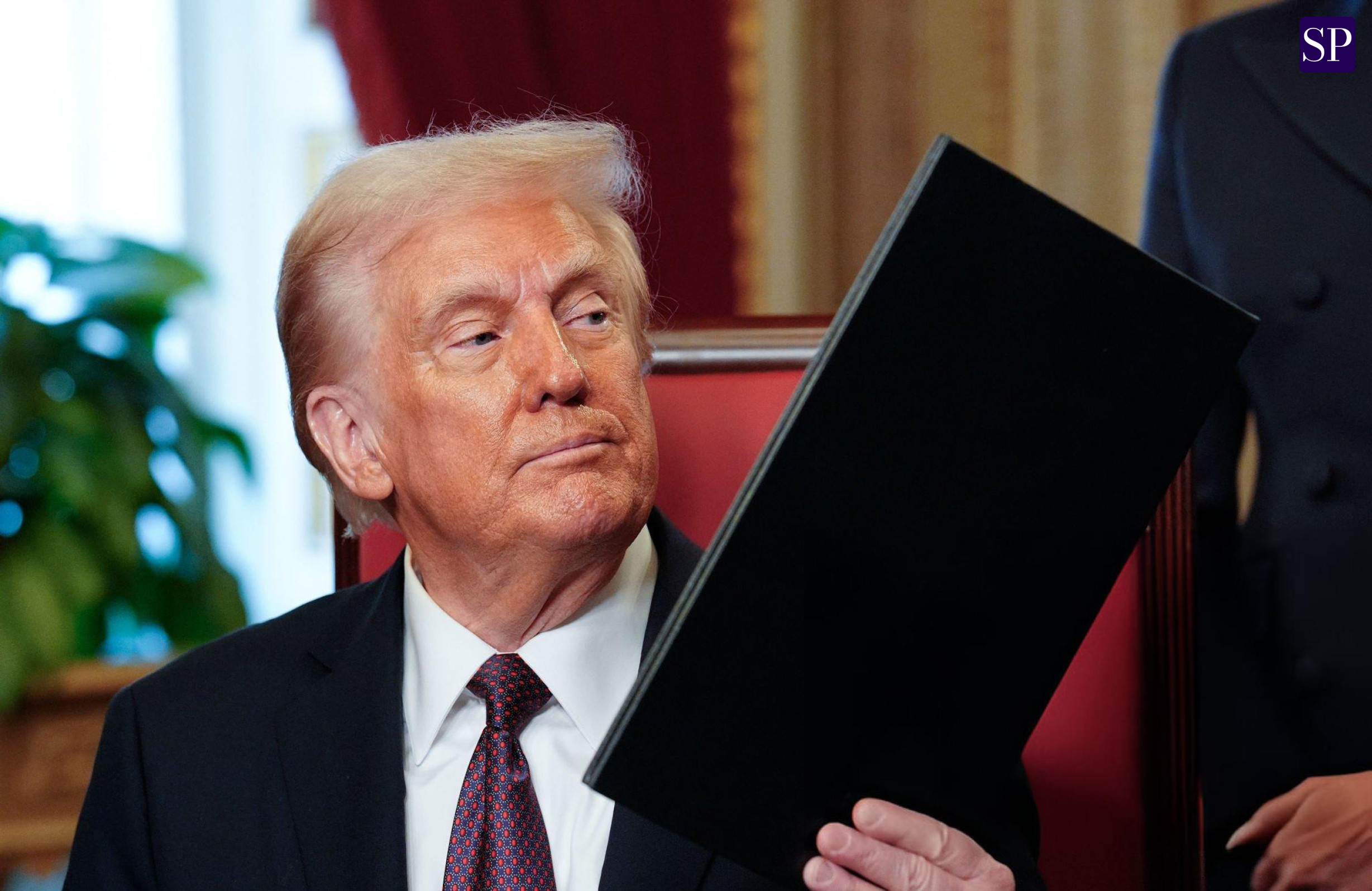Stock markets across the UK and Europe experienced a significant downturn following the latest announcement from Donald Trump regarding a new wave of trade tariffs. The unexpected decision, which includes hefty levies on imports from China, Mexico, and Canada, has sparked concerns of an imminent global trade war.
Market Reaction: A Broad-Based Sell-Off
The impact of Trump’s tariff move was felt almost immediately in the global stock markets. Asian stocks tumbled on Monday morning, setting the stage for a downward spiral across European markets.
- The FTSE 100 index in the UK plummeted by 111 points, settling at 8,562 points, retreating from its record high last Friday.
- Germany’s DAX index suffered a 2% drop upon opening, while France’s CAC 40 declined by 1.9%.
- Spain’s IBEX and Italy’s FTSE MIB also recorded losses, falling 1.7% and 1.4%, respectively.
European Automakers Take a Hit
One of the most severely impacted sectors was European automobile manufacturing. Prominent carmakers saw substantial losses as tariff fears mounted:
- Volkswagen, BMW, Porsche, Volvo Cars, and Stellantis witnessed declines of 5% to 6%.
- Daimler Truck, a key player in the commercial vehicle sector, also saw its stock value plummet.
- French auto parts supplier Valeo took the hardest hit, with shares tumbling by 8%.
UK Banking Sector Feels the Pressure
The financial sector was not spared from the Trump tariff turmoil. UK banks saw a downturn in stock prices, reflecting growing concerns over the impact of trade tensions on the global economy:
- Lloyds Banking Group shares dropped by 1.8%.
- NatWest saw a decline of 1.9%.
- HSBC also recorded losses, with a 1.4% drop.
- Barclays, which was already facing customer dissatisfaction due to an IT glitch that left thousands locked out of their accounts, suffered an additional 2.5% decline in share value.
Economic Forecasts Paint a Bleak Picture
According to Morgan Stanley, the UK’s economic growth forecast remains below 1%, even as the Bank of England predicts a 1.5% growth rate for the same period. Analysts are now questioning whether the UK economy can remain resilient amid rising trade tensions.
Richard Hunter, head of markets at Interactive Investor, described the market reaction as a full-blown “Trump tariff tantrum”, noting that early futures prices indicated a 600-point drop for the Dow Jones and a 2% decline for the S&P 500 and Nasdaq indices.
Why Are Tariffs Causing Market Panic?
The latest round of Trump-imposed tariffs includes:
- A 25% tariff on imports from Mexico and Canada.
- An additional 10% tariff on Chinese goods.
Investors are particularly worried about how these tariffs will impact trade relations between the United States and Europe, as well as the broader global supply chain. The uncertainty is leading to a widespread sell-off in equities, as companies brace for potential economic fallout.
Asian Markets Open to Losses Following Tariff News
Before European markets opened, Asian markets were already feeling the pressure:
- Japan’s Nikkei 225 slumped by 2.8%.
- Hong Kong’s Hang Seng index dipped 1%.
- Mainland Chinese markets remained closed for the Lunar New Year holiday but are expected to react negatively upon reopening.
Expert Opinions on Market Instability
According to Naeem Aslam, chief investment officer at Zaye Capital Markets, the economic instability resulting from these tariffs is driving investor anxiety. “These downturns are fueled by fears that tariffs will disrupt the global economy, particularly in regions where trade ties with the U.S. are deeply interwoven,” he stated.
Kathleen Brooks, research director at XTB, provided a measured response: “While the UK may be in a stronger position than some economies, it cannot escape the potential ripple effects of a trade war.”
What’s Next for the Global Economy?
The long-term implications of these tariffs remain uncertain. However, early signs indicate that financial markets are bracing for a period of heightened volatility. If tensions between the U.S. and its trade partners escalate further, the repercussions could extend well beyond stock market losses, potentially impacting inflation rates, consumer prices, and economic growth across multiple regions.
For now, investors and policymakers alike are watching closely, hoping for diplomatic resolutions that might ease tensions before they spiral into a full-blown trade crisis.
